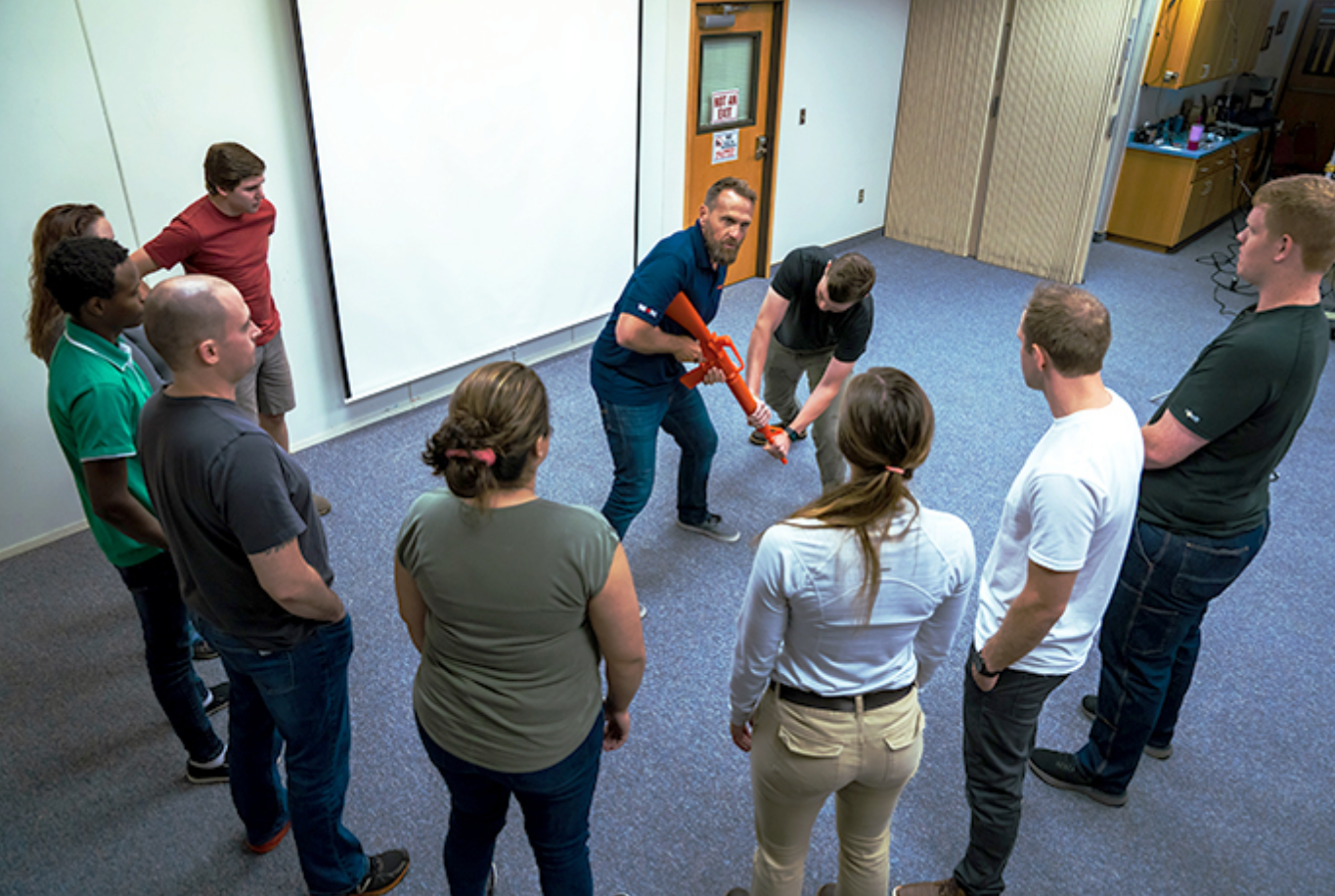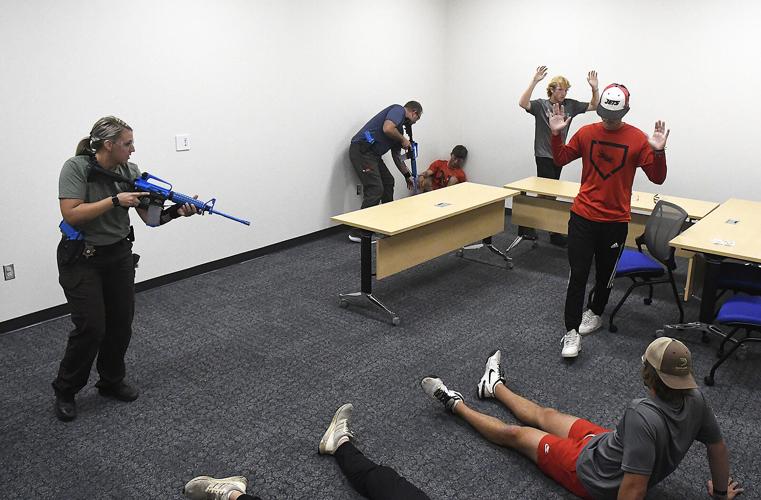Ensuring Public Security with Advanced Active Shooter Training Methods
Ensuring Public Security with Advanced Active Shooter Training Methods
Blog Article
The Vital Duty of Energetic Shooter Training in Enhancing Emergency Situation Reaction Approaches in Different Atmospheres
Active shooter training has become a fundamental component in refining emergency situation response approaches throughout diverse setups, from schools to business environments. By equipping individuals with customized understanding and abilities, these programs not just prepare individuals for prospective crises however likewise foster a culture of recognition and partnership. Nevertheless, the effectiveness of such training hinges on various variables, including the certain context in which it is executed and the recurring commitment to improvement. Exploring these dimensions reveals important insights that can dramatically influence readiness and feedback outcomes when faced with alarming risks.
Importance of Energetic Shooter Training
In an era marked by increasing issues over public safety and security, the value of energetic shooter training can not be overemphasized. As occurrences of weapon physical violence in public spaces remain to rise, companies throughout numerous sectorsâEUR" universities, offices, and public venuesâEUR" are identifying the necessity of preparing their personnel and communities for such emergencies. Active shooter training gears up individuals with crucial skills and expertise to respond efficiently in lethal scenarios, possibly decreasing casualties and saving lives.
The training not only concentrates on prompt action actions, such as emptying and sheltering in position, but additionally cultivates a culture of recognition and preparedness. By participating in realistic simulations and conversations, individuals can determine prospective susceptabilities within their setting and establish methods for mitigating dangers. Such training improves communication and control amongst team participants and very first responders, guaranteeing a more unified method throughout situations.

Trick Parts of Effective Training
Efficient energetic shooter training consists of several essential parts that enhance preparedness and response capabilities. Primarily, practical scenario-based simulations are important. These workouts submerse participants in high-stress situations that resemble potential active shooter events, permitting them to practice decision-making and physical feedbacks under pressure.
In addition, training must include an extensive understanding of interaction procedures. Individuals ought to be skilled in how to pass on vital details to police and fellow individuals throughout a case. This includes using emergency situation informs and understanding the chain of command.
An additional important component is the consolidation of mental wellness awareness. Training should resolve the psychological effect of energetic shooter situations, gearing up participants with coping techniques and resources to sustain their psychological well-being post-incident.
Moreover, regular correspondence course are crucial to guarantee that skills continue to be sharp and expertise is current. This constant education reinforces the importance of readiness and promotes a culture of safety within organizations.
Training for Different Environments
Energetic shooter training need to be tailored to the specific settings in which individuals operate, as each setting presents one-of-a-kind obstacles and dynamics. Training in a corporate workplace will vary considerably from my latest blog post that in a college, buying mall, or healthcare center. Each atmosphere demands a personalized approach that takes into consideration aspects such as layout, populace thickness, and offered retreat courses.
In educational organizations, training programs should emphasize lockdown procedures, interaction procedures with police, and methods for protecting students. Conversely, in business setups, training may concentrate on evacuation methods, identifying questionable behaviors, and utilizing readily available resources for protection or shelter-in-place scenarios.
Additionally, public locations like shopping malls or sporting events need extensive crowd administration methods, with an emphasis on rapid action control amongst safety and security workers and neighborhood police.
In healthcare atmospheres, training needs to resolve specific vulnerabilities, such as the presence of clients that might need prompt aid. By comprehending the distinct qualities of each atmosphere, organizations can establish efficient training modules that improve readiness and improve overall safety, ensuring that individuals are geared up to respond appropriately in varied crisis situations.

Structure a Culture of Awareness
Creating a society of recognition is essential to improving precaution in any type of environment, as it encourages people to acknowledge potential hazards and react proactively. This culture demands continual education and learning, open communication, and the integration of safety and security procedures into day-to-day routines.
Organizations must focus on energetic shooter training as part of their overarching security strategy, making certain that all workers understand the particular dangers related to their atmosphere. Routine training sessions grow watchfulness and knowledge with emergency procedures, urging individuals to stay sharp to unusual habits or circumstances.
Additionally, cultivating a culture of understanding includes developing an atmosphere where reporting suspicious activity is both encouraged and stabilized. active shooter training. Workers need to really feel comfortable sharing their worries without anxiety of retaliation. reference This can be attained via clear channels of communication and helpful management
In addition, participating in community partnerships can increase recognition beyond organizational boundaries, promoting a shared obligation for security. Campaigns such as workshops, drills, and educational sessions can better improve collective alertness. Eventually, building a culture of understanding not only prepares individuals for prospective crises but additionally strengthens the general strength of the company versus dangers.
Evaluating Educating Efficiency
While routine training sessions are important for readiness, assessing their effectiveness is similarly essential to ensure that workers are geared up with the necessary skills and understanding to respond suitably in case of an active shooter circumstance. Analysis procedures must consist of both qualitative and measurable assessments to gauge the effect of training on action capabilities.
Studies and feedback from participants can supply beneficial insights into the training's importance and applicability. Additionally, performing useful drills and simulations enables organizations to observe real-time Full Report decision-making and team effort under stress. Examining the outcomes of these workouts assists determine toughness and areas for renovation.

Involving stakeholders, including regulation enforcement and emergency responders, in the examination procedure can improve trustworthiness and give an extensive point of view on training efficiency (active shooter training). Ultimately, a systematic assessment technique makes certain that energetic shooter training continues to be an important element of a company's emergency situation feedback strategy, fostering a safer environment for all
Conclusion
Active shooter training is important in strengthening emergency action approaches throughout varied settings. By outfitting people with the essential abilities and expertise, such training boosts readiness and control throughout critical incidents. Tailored approaches for numerous setups ensure that particular vulnerabilities are addressed, cultivating a society of understanding and constant education. Ultimately, the execution and examination of efficient training programs add considerably to mitigating the influence of energetic shooter scenarios, consequently protecting lives and enhancing area durability.
Report this page